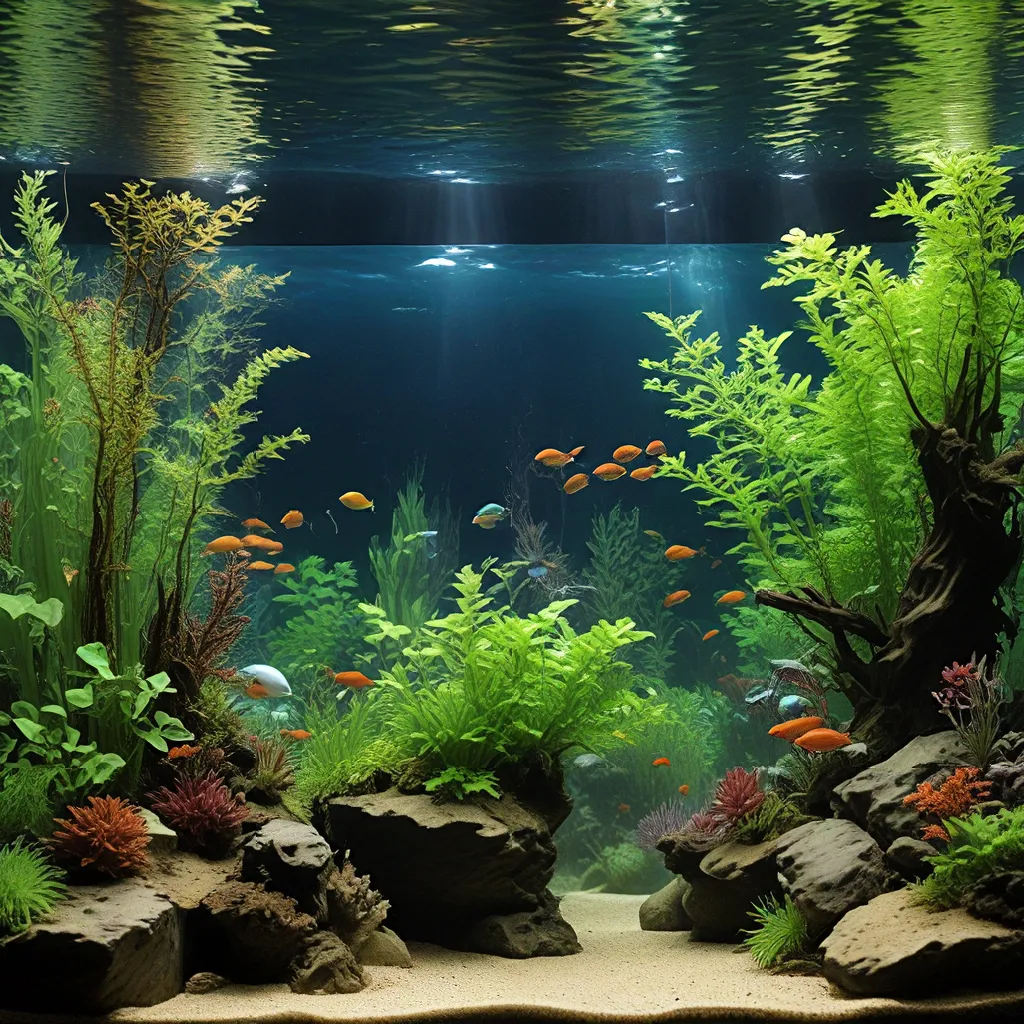
Unlocking the Secrets of Aquatic Habitats
Aquarium hobbyists are often drawn to the allure of recreating natural underwater environments in their home setups. These biotope aquariums, which mimic specific aquatic ecosystems found in the wild, offer a captivating window into the diverse and delicate balance of nature. By understanding the intricate relationships between plants, fish, and their surrounding habitat, we can craft aquascapes that not only dazzle the eye but also provide a thriving home for our aquatic companions.
One of the most fascinating approaches to biotope aquariums involves replicating the dynamic transition from terrestrial to aquatic environments. These transitional habitats challenge us to consider the entire ecosystem, from the land to the water, and how the interplay between the two shapes the unique character of a given aquatic system.
Recreating the Cycle of Life
At the heart of a true biotope aquarium lies the understanding that nature is never static. It is a constant cycle of growth, decay, and rebirth, with each element playing a vital role in the overall balance of the ecosystem. Aquascapers who embrace this philosophy often find themselves moving away from the pristine, manicured look of traditional aquascapes and towards a more natural, functional aesthetic.
One key aspect of this approach is the incorporation of botanical elements, such as leaves, wood, and seed pods, into the aquarium design. These natural materials not only contribute to the aesthetic appeal of the scape but also serve as important sources of nutrients and cover for the aquatic inhabitants. As these botanicals decompose, they release carbon dioxide and other essential compounds that help to nourish the plants and support the overall health of the system.
Successful biotope aquarium designers understand that the maintenance of these systems requires a delicate balance. While it may be tempting to remove any perceived “unsightly” elements, such as decomposing leaves or biofilms, the truth is that these natural processes are essential to the long-term viability of the aquarium. By embracing the imperfections of nature and allowing the ecosystem to evolve organically, aquarists can create a truly immersive and sustainable biotope that reflects the beauty and complexity of the real world.
Putting Theory into Practice
Constructing a biotope aquarium that accurately represents a specific aquatic ecosystem can be a challenging but rewarding endeavor. It requires a deep understanding of the habitat’s physical characteristics, water chemistry, and the unique adaptations of the flora and fauna that thrive within it.
One of the key considerations when setting up a biotope aquarium is the selection of appropriate fish species. Each aquatic ecosystem is home to a delicate balance of organisms, each with their own dietary, behavioral, and environmental requirements. Carefully researching the native inhabitants of the habitat you wish to replicate and choosing compatible species is crucial to the long-term success of your biotope.
In addition to the fish, the choice of aquatic plants and hardscape elements can significantly impact the overall aesthetic and functionality of the biotope. Mimicking the natural substrate, water flow patterns, and the presence of submerged logs, rocks, and leaf litter can all contribute to the authenticity of the aquarium’s appearance and the well-being of its inhabitants.
Embracing the Unexpected
One of the most rewarding aspects of creating a biotope aquarium is the opportunity to embrace the unexpected. Unlike the highly manicured and controlled environments of traditional aquascapes, these natural systems are in a constant state of flux, with new challenges and surprises around every corner.
As aquascaper Johnny Archer eloquently points out, the pursuit of perfection in aquarium design can sometimes come at the expense of the true essence of nature. By allowing for a certain degree of imperfection and decomposition within our biotope setups, we can foster a deeper connection with the natural world and a greater appreciation for the delicate balance that sustains it.
Cultivating a Sustainable Future
As the aquarium hobby continues to evolve, the concept of biotope aquariums stands as a testament to our growing desire to reconnect with the natural world. By recreating the intricate ecosystems that support the diverse life of our planet’s waterways, we not only provide a captivating display for our own enjoyment but also contribute to a greater understanding and appreciation of the fragile environments that our aquatic companions call home.
Through the careful curation of biotope-inspired aquariums, we can inspire others to explore the wonders of the underwater world, to consider the impact of our actions on these delicate habitats, and to take steps towards sustainable aquarium practices that prioritize the well-being of the organisms in our care. By embracing the principles of biotope aquariums, we can cultivate a future where the beauty and complexity of nature are celebrated and preserved, both in our homes and in the wider world beyond.

